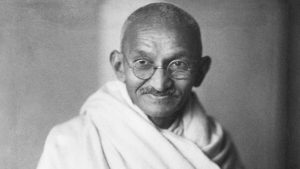The concept of panchayats was a part of the philosophy of ”˜Purna Swaraj’ and ”˜Gram Swaraj’ ”“ Mahatma Gandhi
By Rekha Bhattacharjee
Mahatma Gandhi and Pandit Nehru breathed life into these concepts and gave a practical and patriotic impetus to them during the freedom struggle.
It was widely believed that the development of India depends on the development of the villages. “Only a developed and disciplined society would ensure good governance”.
73rd Amendment Act of the Constitution has been hailed as an important landmark in the constitutional development in creating wide base for participatory democracy and more space for political participation.
The concept of panchayats was a part of the philosophy of ”˜Purna Swaraj’ and ”˜Gram Swaraj’. Mahatma Gandhi and Pandit Nehru breathed life into these concepts and gave a practical and patriotic impetus to them during the freedom struggle.
Panchayati Raj thus became a part of the legacy of the freedom movement and its quest for democratic decentralisation.
Democracy was the greatest gift of our freedom struggle. For while independence made the nation free, it was democracy that made people masters of their own destiny.
Gandhiji believed that democratic freedom had to be founded in institutions of self government in every village of India. Gandhiji had strongly favoured decentralisation
Of economic and political power on the lines of ancient village communities which were more or less self sufficient and self governing course, they were to be remodelled according to the changed circumstances and requirements. He said “Real Swaraj will come not by the acquisition of authority by a few but by the acquisition of the capacity of all.”
This amendment found expression in Article 40 of the Constitution ”“ which states ”“ The States shall take steps to organise village panchayats and endow them with such powers and authority as may be necessary to enable them to function as units of Self Government.”
Pandit Nehru our first Prime Minister believed ”˜the real change comes from within the village and from the very people living in the village.’ Thus he went on to establish institutions of Panchayati Raj as the primary instrument to bring development to the door step of the masses. Pandit Nehru said “Real change comes from within the village, not imposed from outside.The transfer of authority for development work to the Panchayats is likely to change the whole background in our rural areas and make people more self sufficient and conscious of their responsibilities.”
Although successive governments continued ”“ chasm appeared in Gandhiji’s dream and Pandit Nehru’s vision!
In 1989 Prime Minister Rajiv Gandhi was convinced the Panchayati Raj would bring devolution of political powers and ushered in local structures ”“ told Chief Ministers of all States “It is a revolution that will bring democracy to the doorsteps of crores of Indians . It will bring development to a lakh of our villages.” He launched a campaign to build a nation wide consensus ”“ the participation of women was considered essential not only for ensuring their involvement but also for realising the development for women.
In 1988 the numbers of women were negligible ”“ It was in 1992 when Congress passed the Bill in Parliament adding a new chapter to the Constitution – making people’s participation a reality in panchayats.
Today many states have implemented the 50 percent Reservation for Women a reality ”“ yet challenges remain.
Political parties, NGOs and training institutions must continue to join hands so that Panchayati Rajbecomes instruments of Women’s liberation
Short URL: https://indiandownunder.com.au/?p=7538

